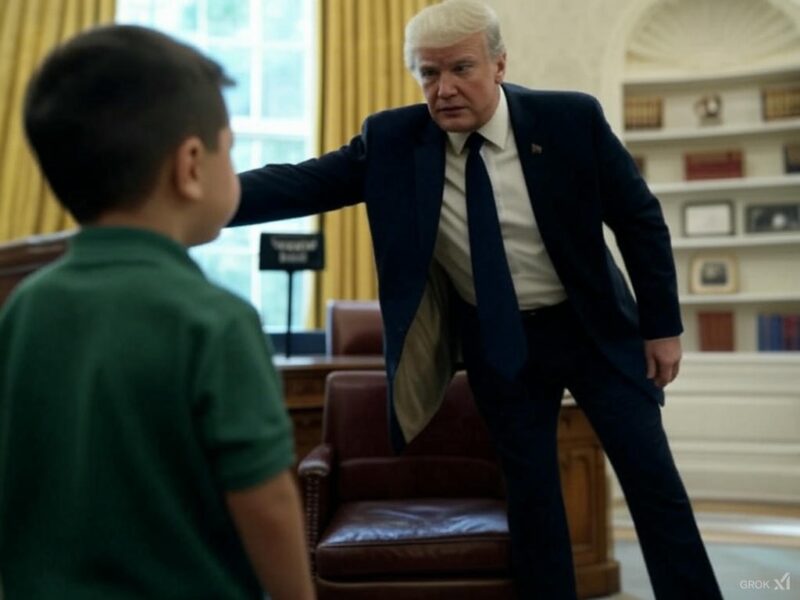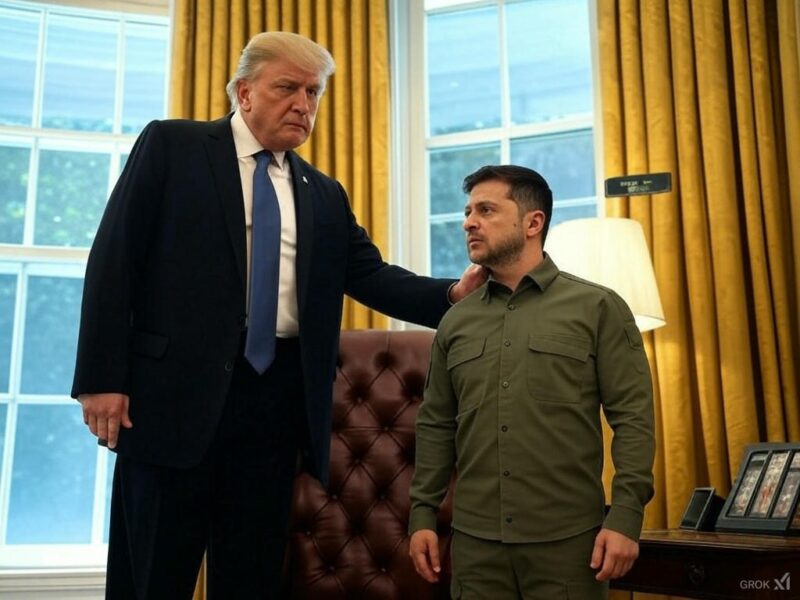Donald Trump’s Second Term: American Pre-Eminence Returns

Since Donald Trump’s second inauguration on January 20, 2025, his administration has roared onto the global stage, reasserting America’s pre-eminence on the world stage. With an unapologetic “America First” agenda, Trump has flexed U.S. might through bold policies and stunning diplomatic wins. On February 28, 2025, a tense Oval Office exchange with Ukrainian President Volodymyr Zelensky crystallized this dominance, proving America dictates terms—not the other way around. From economic resurgence to masterful diplomacy, here’s how Trump’s second term is reshaping the world order.
The Return of American Pre-Eminence: A Foundation of Strength
Trump hit the ground running, dismantling what conservatives see as the Biden administration’s legacy of weakness. His second term policies prioritize American sovereignty, slashing regulations, boosting energy independence, and imposing tariffs on nations gaming U.S. markets. These moves aren’t just economic—they’re geopolitical, signaling that America’s might underpins its global influence.
Militarily, Trump has turbocharged defense spending, modernizing the arsenal and reinforcing strategic bases worldwide. This isn’t the tentative posturing of the past; it’s a clear message to adversaries like Russia and China: America is back, and it’s not bluffing. For conservatives, these policies restore the U.S. as the singular power others must respect—or fear. The far reaching benefits of American pre-eminence on the global stage can’t be overlooked.
Diplomatic Successes: Trump’s Global Mastery
Trump’s diplomatic successes since January are a testament to his deal-making prowess. In the Middle East, his administration brokered a fragile but groundbreaking Saudi-Iran détente in early February 2025, leveraging U.S. energy exports and military presence. This echoes his first-term Abraham Accords, proving Trump’s ability to bend volatile regions to American will.
Closer to home, Trump renegotiated the USMCA with Canada and Mexico, securing terms that favor U.S. workers and manufacturers by mid-February 2025. These wins showcase America’s economic clout as a geopolitical weapon. But the real coup came with the Russia-Ukraine war. Trump’s envoy, Keith Kellogg, paved the way for a ceasefire talks in Riyadh by February 25, 2025, using a carrot-and-stick approach—threatening Russia with escalated U.S. aid to Ukraine while offering economic relief. It’s classic Trump: bold, brash, and effective.

Trump and Zelensky in the Oval Office: America Dictates the Terms
The spotlight of Trump’s second term shone brightest on February 28, 2025, during Zelensky’s Oval Office visit—a meeting that turned explosive and revealing. Yesterday, Zelensky arrived seeking assurances of continued U.S. support for Ukraine’s war effort against Russia. Initial reports suggested Trump offered a pragmatic deal: peace talks with American backing, plus U.S. access to Ukraine’s mineral wealth. But today’s exchange flipped the script, showcasing America’s refusal to be strong-armed.
Mid-meeting, Zelensky pivoted, pressing Trump to maintain Biden-era levels of unconditional military and financial aid—essentially trying to dictate terms to the United States. Trump didn’t flinch. Sources say he cut Zelensky off, declaring, “America doesn’t take orders—we give them.” The room reportedly fell silent as Trump laid down the law: Ukraine could accept U.S.-led peace terms or fend for itself. Zelensky, visibly rattled, backtracked, later calling Trump’s stance “tough but fair” to the press.
For conservatives, this clash was electrifying. The optics—a foreign leader humbled in the Oval Office—screamed American pre-eminence. Trump didn’t just reject Zelensky’s gambit; he turned it into a public lesson: the U.S. sets the agenda. By tying Ukraine’s fate to American interests—like securing mineral rights for U.S. firms—Trump ensured the world saw a superpower calling the shots, not bowing to pleas.
Global Geopolitics: America’s Singular Power Reasserted
The Zelensky showdown is the latest proof of Trump’s reshaping of global geopolitics. Russia’s Vladimir Putin, once swaggering under Biden’s watch, now faces a U.S. president willing to outmaneuver him. The Riyadh talks, sparked by Trump’s pressure, show Moscow scrambling to adjust. China, too, is on notice—Trump’s tariffs and Pacific naval buildup signal zero tolerance for Beijing’s ambitions. Even NATO allies, chastened by Trump’s demands, are ponying up defense funds to stay in his good graces.
This isn’t diplomacy by committee—it’s America dictating terms with economic leverage, military muscle, and Trump’s personal grit. The Zelensky exchange drives it home: no nation, friend or foe, tells the U.S. what to do. Conservatives see this as the natural order restored after years of globalist wavering. Trump’s second term has made America the singular power others must navigate.
Why the Zelensky Clash Resonates with Conservatives
For Trump’s base, today’s Oval Office drama is pure validation. Zelensky’s attempt to reverse course—and Trump’s swift smackdown—embodies the conservative ideal of unyielding American strength. It’s not just about Ukraine’s war or minerals; it’s about a president who refuses to let the U.S. be a global doormat. Biden’s endless aid checks? Gone. Trump’s message? America helps on its terms, or not at all.
This stance reverberates beyond Kyiv. Allies like the UK and Japan see a U.S. leader they can’t push around; adversaries like Iran and North Korea see a force they can’t intimidate. The Zelensky clash isn’t a one-off—it’s a blueprint for how Trump’s America will dominate global geopolitics: decisively, unapologetically, and on its own terms.
A New Era of American Pre-Eminence
As we head into March, Trump’s second term stands as a conservative triumph. His policies rebuild American might, his diplomatic successes rewrite the global playbook, and his showdown with Zelensky proves the U.S. isn’t here to take notes—it’s here to give orders. Critics may howl, but the evidence is undeniable: America is the pre-eminent power again, and Donald Trump is the architect. In a world of shifting alliances and rising threats, that’s a legacy conservatives can cheer.
